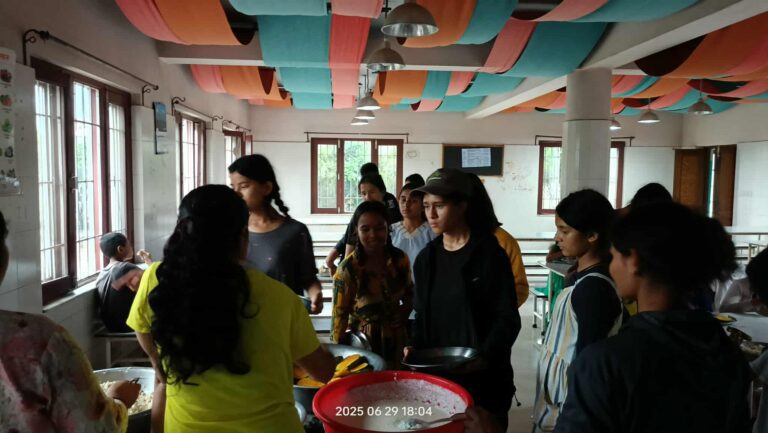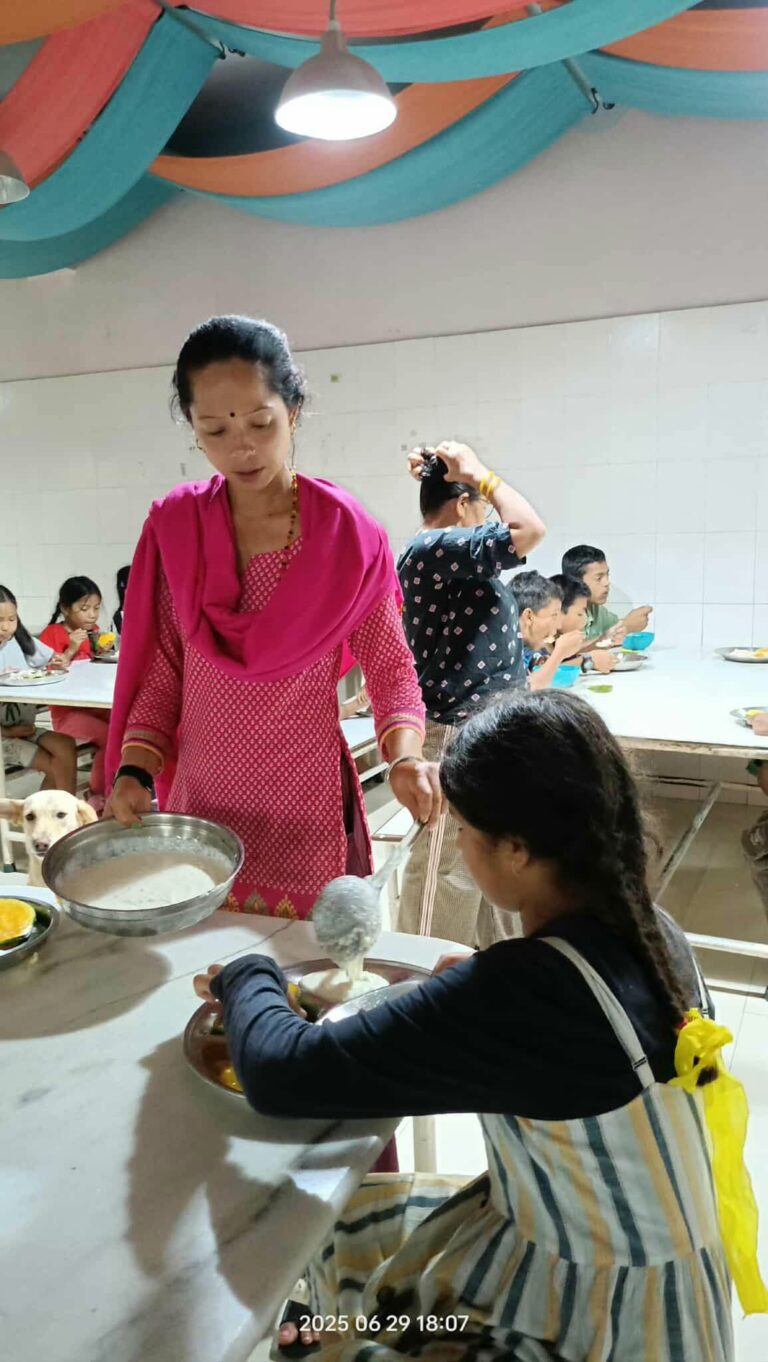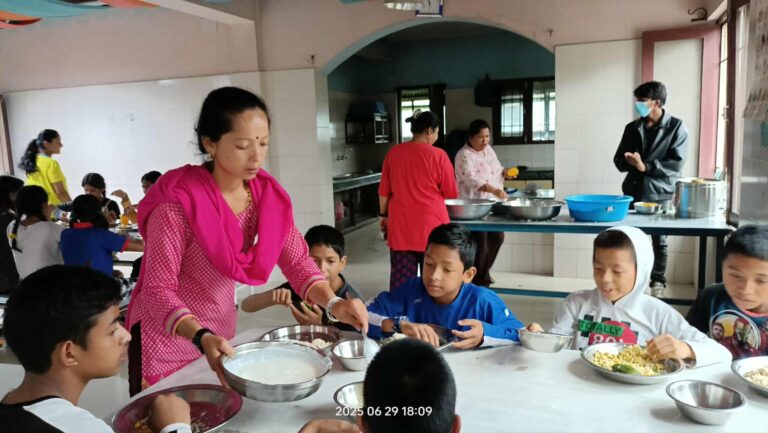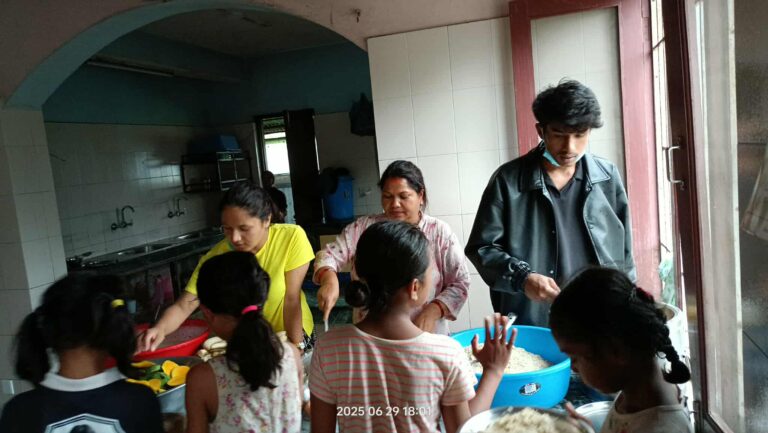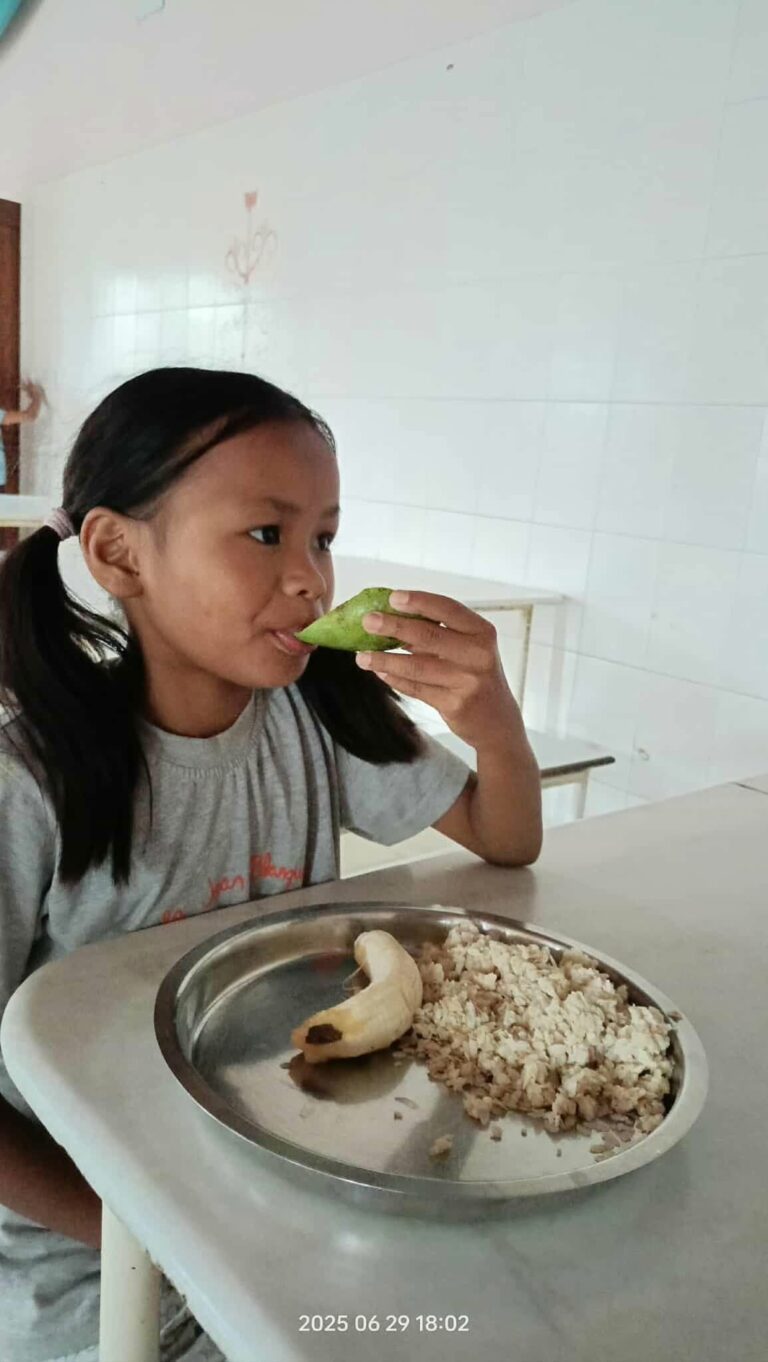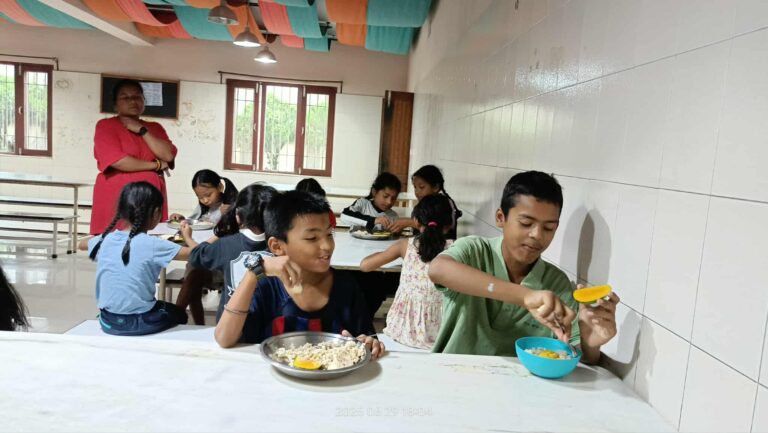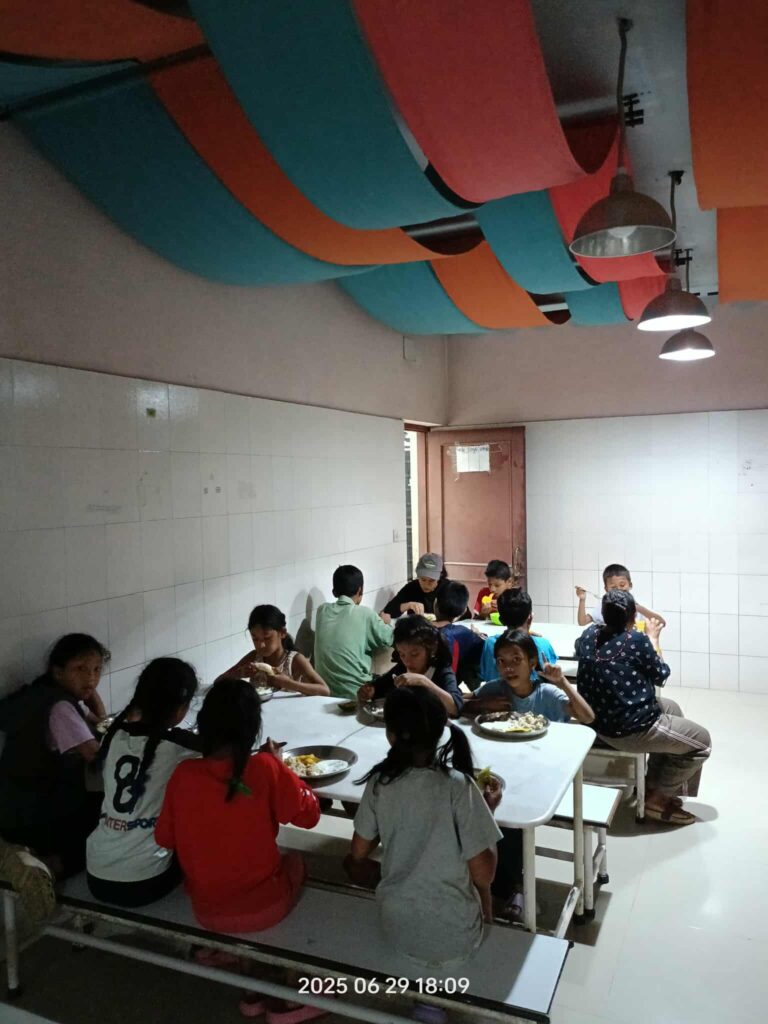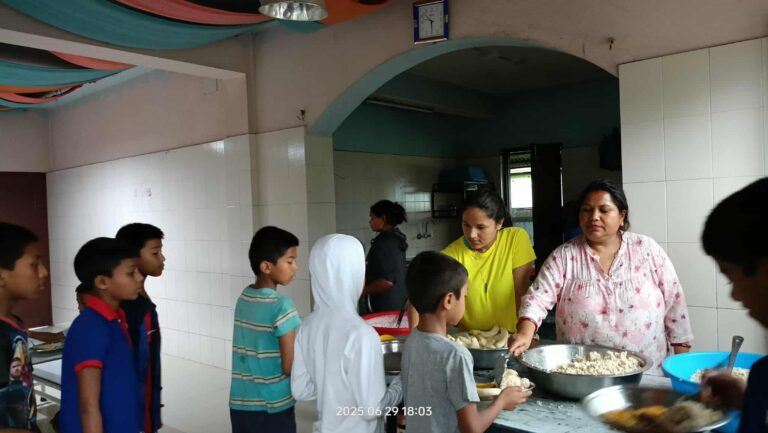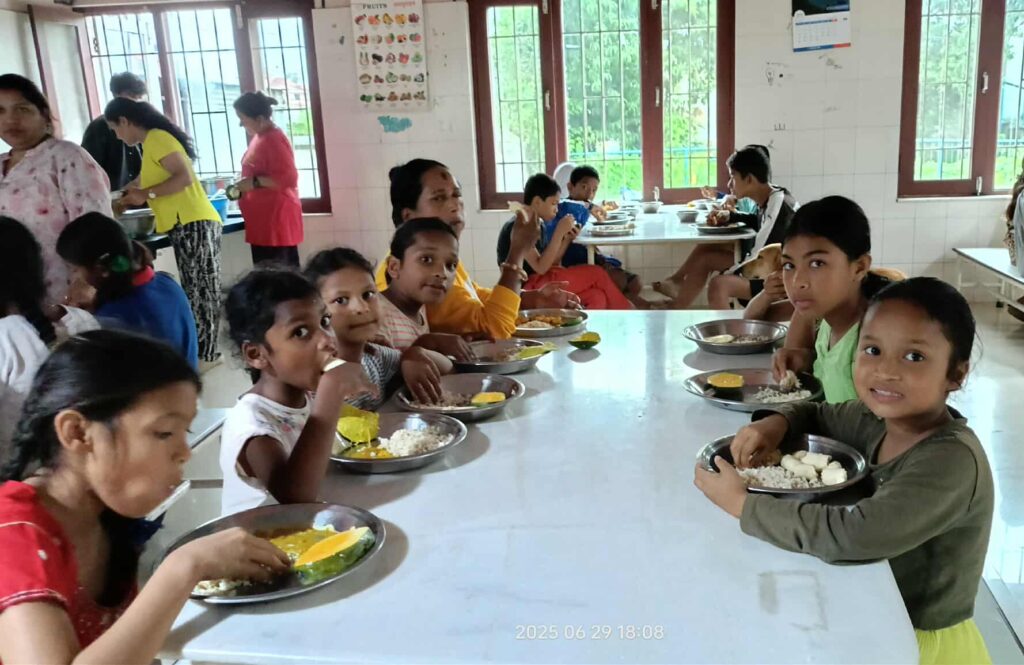
On 29th June 2025, Children’s Home joined in the nationwide celebration of National Paddy Day (Asar 15) by sharing a traditional and symbolic meal of Chuira (Beaten Rice) with fresh curd, mango, and banana. Though the celebration was simple, it carried deep cultural and educational significance for the children, connecting them to Nepal’s agricultural heritage and the hardworking farmers who form the backbone of our nation.
A Tribute to the Farmers of Nepal
National Paddy Day marks the beginning of the rice planting season in Nepal, celebrated with great enthusiasm by farmers across the country. Officially recognized as a national event since 2061 BS, the day highlights the vital role that agriculture plays in our economy, identity, and way of life. It uplifts the spirit of farmers, celebrates their perseverance, and reminds the nation of their tireless work to feed us all.
Chuira, Curd, Mango & Banana: A Meal Full of Meaning
At the heart of the celebration at Children’s Home was a traditional meal of Chuira and Dahi (curd), enhanced with the sweetness of fresh mango and banana. This nutritious and symbolic dish is widely eaten on Asar 15 as a gesture of appreciation for the season’s first planting. The beaten rice provides energy and ease, while the curd cools the body. The addition of mango and banana adds natural sweetness, seasonal freshness, and richness to the meal, making it a perfect combination for the warm, rain-filled day of Asar.
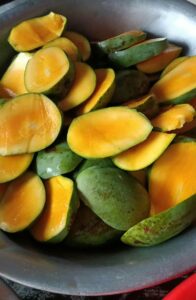
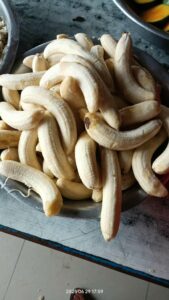
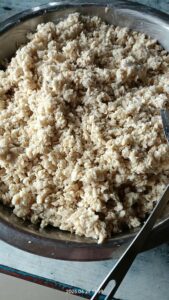
What is Dahi Chuira?
Dahi Chuira is a humble and culturally rich Nepali dish made by mixing beaten rice with fresh curd. It is commonly shared during festivals and agriculture events, especially during National Paddy Day. Farmers traditionally enjoy it after hours in the fields, as a way to rest, nourish themselves, and celebrate the work they’ve begun. Beyond its nutritional value, Dahi Chuira is a symbol of gratitude, unity, and respect for labor, a tradition that connects generations.
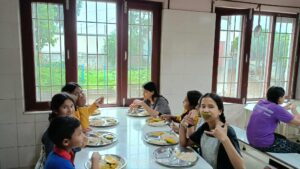
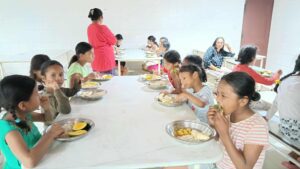
Tradition from the Terai Region
In different regions of Nepal, the day is celebrated with unique customs. In the Terai, farmers bring food, locally known as jalkhai, directly to the fields. This includes thick homemade bread made from wheat flour, oil, salt, and spicy pickles. In one beloved tradition, if the landowner comes to help with planting, farmers playfully throw mud at them to chase them away. These playful customs foster a spirit of equality, humor, and strong social bonds among farming communities.
Asar: A Season of Song and Story
The month of Asar, when monsoon rains awaken the land, is not only about planting, it is a time of rich literary and cultural expression. Generations of farmers have passed down folk songs, poems, and sayings that celebrate the season. These creations reflect the emotional connection between people and the soil, expressing hope, struggle, and joy.
Celebrating Hope and Unity
Asar 15 is not just a date, it is a celebration of life, unity, and shared effort. It brings together communities in a spirt of cooperation, reminding us that when we work together, we grow together. Whether in the muddy fields or around a shared meal of Dahi Chiura, the message is the same: hope begins when we honor the earth and one another.
Embracing the Monsoon
The monsoon rains, so crucial for farming, are welcomed as a blessing. They represent renewal, abundance, and the promise of a fruitful season. Celebrating National Paddy Day is way of expressing our gratitude for nature, and acknowledging the delicate balance between human effort and environmental cycles that sustain life.
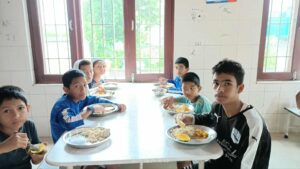
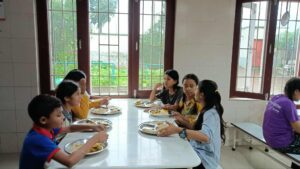
Nurturing Roots at Children’s Home
At Children’s Home, even a modest celebration like this becomes an opportunity to nurture the values of gratitude, awareness, and respect. Through the act of sharing Dahi Chuira with mango and banana, our children connected with their culture, honored the role of farmers, and learned to appreciate the hard work behind every grain of rice. We believe that planting these values in young hearts today will grow into a future rooted in compassion and understanding.
Photos

